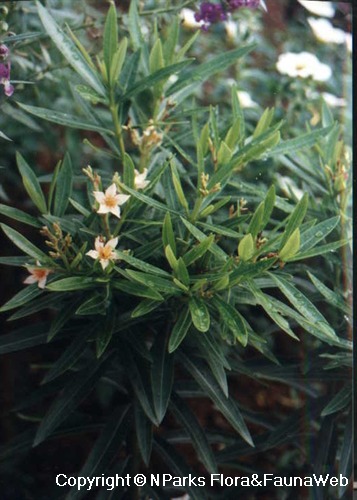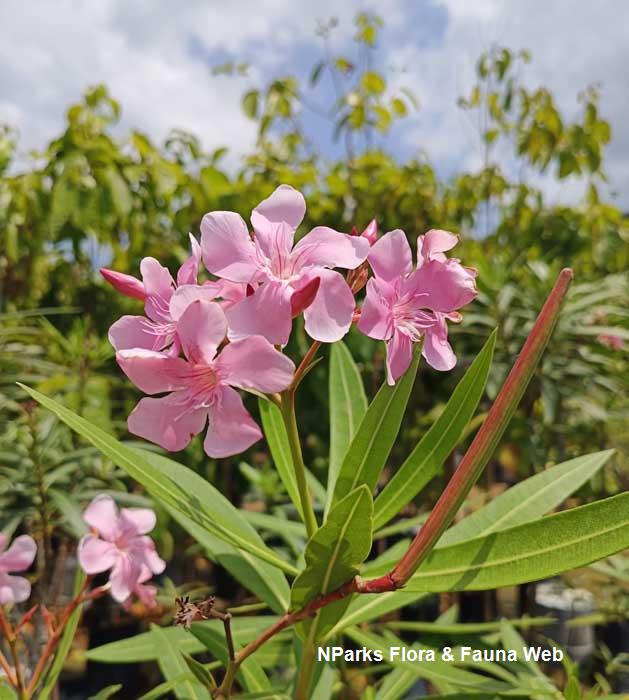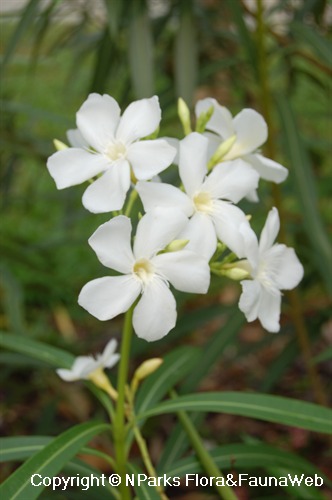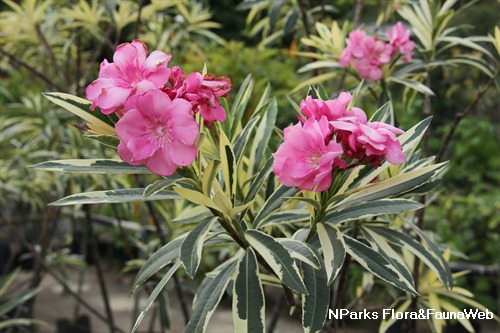
Name
Classifications and Characteristics
| Plant Growth Form | Shrub |
|---|
Description and Ethnobotany
| Growth Form | Large woody shrub, up to 6 m tall but usually about 1.5 - 3 m, can be pruned into small tree. |
|---|---|
| Foliage | Leaves glossy and thick, with prominent mid-rib, lanceolate in shape, arranged in pairs or whorls of 3 along woody stem, mixture of cream and green colour (variegation). |
| Flowers | Flowers fragrant, bright pink and showy, 5 petals, in terminal clusters. |
| Fruit | Fruits are small narrow capsules, drooping and pod-like, split when dry to release fluffy seeds. Seeds dispersed by wind. |
| Etymology | Genus name derived from Greek 'nerion' meaning moist, as plant likes moist soils. Species epithet 'oleander' refers to leaves which resemble olive leaves. |
Landscaping Features
| Desirable Plant Features | Ornamental Flowers |
|---|---|
| Landscape Uses | Parks & Gardens, Small Gardens |
| Usage Hazard - Cons | Toxic Upon Ingestion |
Plant Care and Propagation
| Light Preference | Full Sun |
|---|---|
| Water Preference | Moderate Water |
| Rootzone Tolerance | Well-Drained Soils |
| Propagation Method | Stem Cutting |
Foliar
| Mature Foliage Colour(s) | Cream / Off-White, Green |
|---|
Floral (Angiosperm)
| Flower Colour(s) | Pink |
|---|
Image Repository
Others
| Master ID | 30177 |
|---|---|
| Species ID | 4486 |
| Flora Disclaimer | The information in this website has been compiled from reliable sources, such as reference works on medicinal plants. It is not a substitute for medical advice or treatment and NParks does not purport to provide any medical advice. Readers should always consult his/her physician before using or consuming a plant for medicinal purposes. |

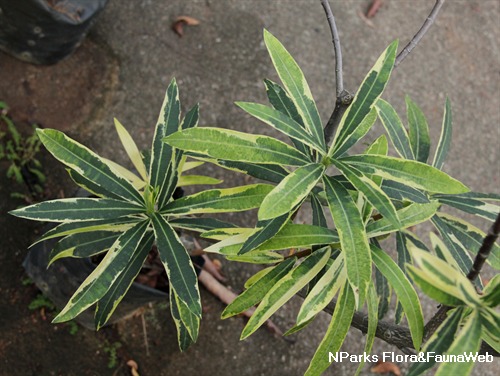
.jpg)
